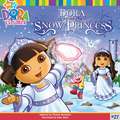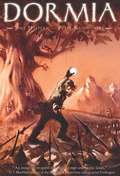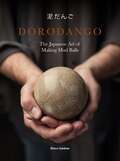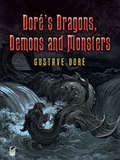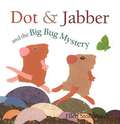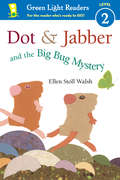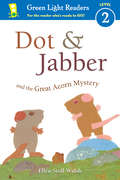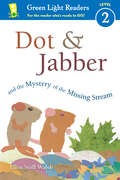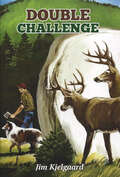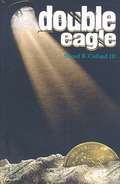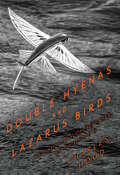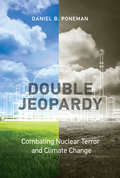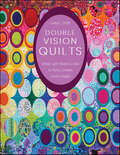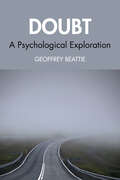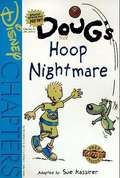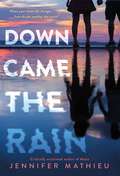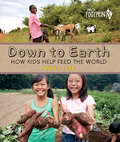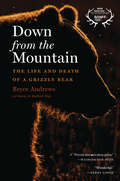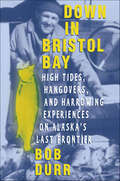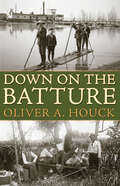- Table View
- List View
Dora Saves the Snow Princess (Dora the Explorer)
by Phoebe BeinsteinJoin Dora and Boots as they jump into a fairy tale to save the Snow Princess! They have to save the Snowy Forest from melting away too. But they can't do it without you!
Dormia
by Jake Halpern Peter KujawinskiIntroducing Alfonso Perplexon, hero of the epic fantasy tale Dormia!Alfonso Perplexon is an unusual sleeper. He climbs trees, raises falcons, even shoots deadly accurate arrows, all in his sleep. No one can figure out why.Then one evening a man arrives at Alfonso's door, claiming to be Alfonso's long-lost uncle Hill. This uncle tells a fantastical tale: Alfonso's ancestors hail from Dormia-an ancient kingdom of gifted sleepers-which is hidden in the snowy peaks of the Ural Mountains. According to Hill, Dormia exists thanks to a tree known as the Founding Tree, with roots that pump life into the frozen valley. But the Founding Tree is now dying, and in a matter of days, Dormia faces an icy apocalypse.Dormia's salvation lies with the Great Sleeper, who possesses the special powers to enter a sleep trance and grow a new Founding Tree. Hill suspects that Alfonso is just such a person. In fact, Alfonso's sleeping-self has already hatched this tree. Now the question is: Can Alfonso and his uncle deliver it in time? They must hurry, but they also must be careful not to be followed by Dormia's age-old enemy, the Dragoonya, who are always hunting for one of the secret entryways into Dormia.Alfonso agrees to take the tree to Dormia, and thus begins one of the greatest adventures a twelve-year-old boy could ever wish for.As he woke up from a late afternoon nap, Alfonso blinked open his eyes and discovered that he was perched at the top of a gigantic pine tree - some two-hundred feet above the ground. The view was spectacular. Alfonso could see for miles in every direction and he could even make out his house in the distant hamlet of World's End, Minnesota. Unfortunately, there was no time to enjoy the view. The small branch that Alfonso stood upon was covered with gleaming snow and creaked dangerously under the pressure of his weight. Icy gusts of wind shook the entire treetop. Alfonso looked down grimly at the ground far below. If he fell, he would most certainly die."Oh brother," muttered Alfonso to himself. "Not again."
Dormilones de verano (Spanish Edition): Animales aletargados
by Melissa Stewart¡Edición en español! Todos sabemos que hay animales que hibernan en el invierno. Pero, es momento de descubrir los animales que duermen todo el verano. Una fascinante lectura de no ficción para niños de 6 a 9 años que aman los animales y la naturaleza, ¡y que quieren aprender sobre las diferentes especies que dormitan en verano!Spanish language edition! Everyone knows about animals that hibernate in the winter. But it's time to discover animals that sleep all summer long.A fascinating nonfiction read for 6-9-year-old kids who love animals and nature and want to learn about the different species that estivate!En todas las clases de ciencias se discute sobre los animales que hibernan durante los meses de invierno, pero pocos saben sobre los animales que practican la estivación, un sueño prolongado durante los periodos calientes o secos.La doble capa textual ayuda a los lectores a darse cuenta de las razones por las cuales los animales aletargados dormitan, ya sea porque el clima cálido amenaza el suministro de alimentos o para evitar el aumento de la temperatura corporal.Desde la mariquita hasta la salamandra, desde el pez pulmonado africano hasta el erizo del desierto, aprende sobre doce animales que estivan y sus hábitos, tanto mientras duermen como cuando están despiertos, explicado mediante un texto claro e ilustraciones elegantes en acuarela.All science classrooms discuss animals that hibernate during winter months, but few know about animals that estivate—a prolonged sleep during hot or dry periods.Dual layers of text awaken readers to the reasons estivating animals become dormant—whether it's because warm weather threatens food supply or to avoid increased body temperatures.From the ladybug to the salamander, from the lungfish to the desert hedgehog, learn about twelve estivating animals and their habits—both when sleeping and awake—explained through clear text and elegant watercolor illustrations.
Dorodango: The Japanese Art Of Making Mud Balls (ceramic Art Projects, Mindfulness And Meditation Books)
by Bruce Gardner"When the finished dorodango is viewed in collection, I am awed by the diversity of the soil in my home state of New Mexico. Each dorodango is a snapshot of location, time, and technique" - Bruce GardnerExplore the craft and technique of dorodango in master crafter Bruce Gardner's new book, Dorodango: The Japanese Art of Making Mud Balls.The Japanese hikaru dorodango, or shiny mud ball, is created by rolling earth by hand into a perfect sphere and polishing it until it gleams. Not only are the results truly impressive, but this calm and meditative practice, a traditional Japanese playground activity for children, has been rediscovered as a peaceful pastime for people of all ages.Alongside beautiful photographs of the process, Bruce Gardner covers every aspect of making and finishing your dorodango, accompanied by inspiring words on the mindful qualities of this earthy activity.Why not use some earth from a place which is special to you? Creating dorodango from your native soil will connect you with it in a new, fully immersive way. Or you can create dorodango to remind you of your travels? Build your collection of dorodango and you'll find that earth from different locations each have their own unique properties and finishes.Known for inducing flow, the ultimate state of happiness, this simple art is perfect for those who enjoy practising mindfulness, spending time in nature and working with their hands. Are you ready to get your hands dirty?
Dorodango: The Japanese Art of Making Mud Balls
by Bruce Gardner"When the finished dorodango is viewed in collection, I am awed by the diversity of the soil in my home state of New Mexico. Each dorodango is a snapshot of location, time, and technique" - Bruce GardnerExplore the craft and technique of dorodango in master crafter Bruce Gardner's new book, Dorodango: The Japanese Art of Making Mud Balls.The Japanese hikaru dorodango, or shiny mud ball, is created by rolling earth by hand into a perfect sphere and polishing it until it gleams. Not only are the results truly impressive, but this calm and meditative practice, a traditional Japanese playground activity for children, has been rediscovered as a peaceful pastime for people of all ages.Alongside beautiful photographs of the process, Bruce Gardner covers every aspect of making and finishing your dorodango, accompanied by inspiring words on the mindful qualities of this earthy activity.Why not use some earth from a place which is special to you? Creating dorodango from your native soil will connect you with it in a new, fully immersive way. Or you can create dorodango to remind you of your travels? Build your collection of dorodango and you'll find that earth from different locations each have their own unique properties and finishes.Known for inducing flow, the ultimate state of happiness, this simple art is perfect for those who enjoy practising mindfulness, spending time in nature and working with their hands. Are you ready to get your hands dirty?
Doré's Dragons, Demons and Monsters
by Gustave DoréOne of the great book illustrators of all time, Gustave Doré created richly detailed, brilliantly imaginative scenes of legendary worlds filled with fantastic creatures. This collection of more than ninety illustrations dramatically demonstrates the amazing inventiveness of this remarkable nineteenth-century artist.His fanciful portrayals of sea serpents, fire-breathing dragons, lost souls suffering endless agonies, and scores of other grotesque images were originally drawn for The Bible, Paradise Lost, Don Quixote, The Divine Comedy, and other great works of literature. An excellent reference and an exceptional supply of royalty-free graphics for use by artists and craftspeople, these magnificent illustrations will delight lovers of fine art and anyone fascinated by creatures of myth and fantasy.
Dot & Jabber and the Big Bug Mystery
by Ellen Stoll WalshBugs are all over Dot and Jabber's meadow. Then--poof!--they're gone! Bugs can't just disappear, can they? The mouse detectives know a big bug mystery when they see one. Join them as they search for clues to prove that there's more to this vanishing act than meets the eye. An afterword provides clear and fascinating information about how insects and animals use camouflage.
Dot & Jabber and the Big Bug Mystery (Dot & Jabber #3)
by Ellen Stoll WalshBugs are all over Dot and Jabber's meadow. Then—poof!—they're gone! Bugs can't just disappear, can they? The mouse detectives know a big bug mystery when they see one. Join them as they search for clues to prove that there's more to this vanishing act than meets the eye. An afterword provides clear and fascinating information about how insects and animals use camouflage.
Dot & Jabber and the Great Acorn Mystery (Dot & Jabber)
by Ellen Stoll WalshDot and Jabber are mouse detectives with a mission: They’re determined to find out how a little oak tree grew in their field when there are no other oak trees around. They know it grew from an acorn, but how did the acorn get there? Dot and Jabber have a case to crack--if Jabber doesn’t eat the clues first! Ellen Stoll Walsh, creator of the popular Mouse Paint mice, introduces two new mice who love mysteries. Full of curiosity and humor, Dot and Jabber track clues to solve science mysteries for young readers. An afterword presents easy-to-understand facts about acorns and oak trees.
Dot & Jabber and the Mystery of the Missing Stream (Dot & Jabber)
by Ellen Stoll WalshLast night the rain poured down. Today the stream is empty! Where did the water go? It's a good thing Dot and Jabber are on the case--these mouse detectives love mysteries. Their scrambling search upstream leads to funny encounters with a puddle full of minnows and a snake . . . and to lots of clues. But can the detectives figure out just how those clues fit together? Ellen Stoll Walsh, creator of the popular Mouse Paint mice, brings us this companion book to Dot & Jabber and the Great Acorn Mystery. An afterword presents easy-to-understand facts about storms and dams.
Double Challenge
by Jim KjelgaardTed Harkness and his father plan to open a hunting lodge, but have no idea of the trouble it will bring. When Ted’s father is accused of attempted murder and takes to the hills to avoid arrest, Ted finds himself having to manage the opening of their hunting lodge on his own. But how can he concentrate on guests with his only parent’s future hanging by a thread? Ted has no choice. He knows he must clear his father’s name—whatever the cost! A thrilling hunting-based mystery, as only wildlife author Jim Kjelgaard could write.
Double Eagle
by Sneed B. CollardMike and Kyle must outrun both a hurricane and thieves who will do anything to get their hands on a fortune in Confederate gold!The year is 1862. The Skink, a Confederate ship, is attacked by Union forces and sinks off the Alabama coast in the Gulf of Mexico. Although the ship was rumored to be carrying newly minted gold coins, no trace of the wreck and not even a single piece of Confederate gold is ever found. Fast forward to 1973. Mike is prepared for another routine summer in Pensacola with his marine biologist father. But plans suddenly change and Mike finds himself on Shipwreck Island—right near the site where the Skink went down. Mike and his new friend Kyle are intrigued by a salvage ship anchored just offshore. Some say it was brought in by fortune hunters, but when the boys scale a fence at the fort on the island, they realize that the fortune hunters may be looking in the wrong place. There in the sand-covered floor of an abandoned chamber they spot something shiny: an old double-eagle gold coin. Mike and Kyle agree to keep their discovery a secret and start their own investigation into the shipwreck and the missing gold. Award-winning author Sneed B. Collard III blends history and mystery to create a dramatic, page-turning story featuring a strong friendship and plenty of action.
Double Eagle
by Sneed B. Collard IIIIn 1973, Michael and Kyle's discovery of a rare Confederate coin at an old Civil War fort turns into a race against time as the boys try to find more coins before a hurricane hits Alabama's Gulf coast.
Double Hyenas and Lazarus Birds: A Sideways Look at the Pacific Ocean and Everything in It
by Charles HoodLauded essayist takes to the high seas in hot pursuit of elusive birds, artistic ghosts, fathers and their memories, and above all, safe harbor."Among nature writers now working, Charles Hood may be my favorite." —Jonathan FranzenCharles Hood is on a boat, wearing at least two life jackets as he scans the sky for seabirds and plumbs the depths of his—and our—relationship with the vast Pacific Ocean. Winner of the Foreword INDIES Book of the Year for his collection of essays A Salad Only the Devil Would Eat: The Joys of Ugly Nature, Hood now brings his irrepressible curiosity to the lives of petrels, frigate birds, sea snakes, and flying fish. During our voyage, he resurrects Melville's journey on tempestuous seas to San Francisco, takes us into the storm-tossed minds and paintings of J. M. W. Turner and Winslow Homer, and surfaces the trauma—still reverberating—to ocean and family ecologies alike from World War II. As sharp and witty as ever, Hood also turns his scrutiny on a more personal history, navigating murky waters of harm and forgiveness, love and entrapment. Full of wonder, joy, and terror at the shared capacity of the ocean and the humans on its edges to nurture life and damage it irreparably, this book is a vessel, seaworthy and transportive.
Double Jeopardy: Combating Nuclear Terror and Climate Change (Belfer Center Studies in International Security)
by Daniel B. PonemanMaking the case that we can use nuclear power to combat climate change even as we reduce the risks of nuclear terror.Humanity faces two existential threats: nuclear annihilation and catastrophic climate change. Both have human origins, and both are linked to the use of nuclear energy. Inherent in the use of atomic fission is the risk that the technology and materials can be diverted to terrorists or hostile nations and used to make nuclear weapons. The key question is whether we can use nuclear energy to reduce the threat of climate change without increasing the risk that nuclear weapons will be used. In Double Jeopardy, Daniel Poneman argues that the world needs an “all-of-the-above” energy policy, one that advances the goal of decarbonizing the environment through all available means—including nuclear power. Poneman makes a compelling case that we can enhance the ability of nuclear power to combat climate change even as we reduce the risks of nuclear terror. Doing so will require well-crafted laws and policies, implemented with an ethos of constant vigilance and embedded in a culture that weaves safety and security goals into the fabric of our nuclear programs. This will enable government and industry to work together to maximize energy and climate benefits while minimizing safety and security risks.
Double Vision Quilts: Simply Layer Shapes & Color for Richly Complex Curved Designs
by Louisa L. SmithFool the eye with dynamic quilts that are easy to sew Learn how to turn squares and rectangles into circles and ovals with no curved piecing—it’s easy! Use innovative layering, playful patterns, and delightful color choices to create 11 mind-bending quilt projects that’ll have you seeing double. The best-selling author of Strips ‘n Curves shares three simple construction methods. With something for every type of quilter, the endless possibilities of this collection will inspire you to see quilting in a whole new light. • No curved piecing! Add three easy techniques to your repertoire for no-stress circles and ovals • 11 opulent quilts with dazzling primary and secondary designs • Learn layering, texture, color, and pattern with the best-selling author of Strips ‘n Curves
Double-hull Tanker Legislation: An Assessment Of The Oil Pollution Act Of 1990
by Committee on Oil Pollution Act of 1990 (Section 4115) Implementation ReviewThe passage of the Oil Pollution Act of 1990 (OPA 90) by Congress and subsequent modifications of international maritime regulations resulted in a far-reaching change in the design of tank vessels. Double-hull rather than single-hull tankers are now the industry standard, and nearly all ships in the world maritime oil transportation fleet are expected to have double hulls by about 2020.This book assesses the impact of the double hull and related provisions of OPA 90 on ship safety, protection of the marine environment, and the economic viability and operational makeup of the maritime oil transportation industry. The influence of international conventions on tank vessel design and operation is addressed. Owners and operators of domestic and international tank vessel fleets, shipyard operators, marine architects, classification societies, environmentalists, and state and federal regulators will find this book useful.
Doubt: A Psychological Exploration
by Geoffrey BeattieBlending the latest academic research with case studies of famous figures, this highly insightful book presents ‘doubt’ as a central concept for psychology. It is a concept which has been oddly neglected in the past, despite its ubiquitous nature and far-reaching influence. Exploring everything from self-doubt and impostor syndrome to the weaponisation of doubt with respect to climate change and the marketing of cigarettes, bestselling author Geoffrey Beattie navigates readers through the various ways doubt can start and develop, changing the individual in the process. Written in Beattie’s distinctive and engaging style, Doubt takes the reader into the lives of transformational thinkers, artists, scientists and writers to explore how and why doubt was crucial in their lives and how the likes of Kafka, Jung, Picasso and Turing succumbed to doubt or learned to control it. Beattie argues that doubt is central to the self; it can be either a safeguarding mechanism or a distraction, rational or irrational, systematic or random, healthy or pathological, productive or non-productive. The book helps readers to recognise how doubt may have been operating in their own lives and to identify how and when it has been used against us – for example, to prevent climate action – and at what personal and societal cost. Presenting a compelling case for why doubt cannot be ignored, this book is of major interest to academics from a wide range of disciplines, including social and cognitive psychology, clinical and counselling psychology, sport psychology, sociology, business studies, politics, art and literature, as well as the general public, who may well see something of themselves in its pages.
Doug's Hoop Nightmare
by Jim JihkinsDoug desperately wants to impress Patti Mayonnaise, his secret love. But at basketball camp, where Patti is an assistant coach, he can't seem to do anything right. All Doug wants to do is sink a shot without looking stupid.
Down Came the Rain
by Jennifer MathieuFrom Jennifer Mathieu, the acclaimed author of Moxie - now a Netflix film - and Bad Girls Never Say Die, comes a bold novel about two young activists who find love and themselves as they tackle the threat of climate change. After Eliza’s home in Houston is destroyed by Hurricane Harvey, she is forced to transfer to Southwest High School. Traumatized by the floods and anxious in her new surroundings, Eliza throws herself into environmental activism, even if it's against the wishes of her Big Oil dad.But when she meets Javi – a boy who has experienced climate-related trauma of his own – she's finally able to connect with someone over the devastating mental effects of ecological disaster. Filled with nuanced themes of mental health, classism, and eco-anxiety, Down Came the Rain is a riveting and moving tale of friendship, first love, and what it means to grow up in an ever-changing world.
Down Comes the Rain (Let's-Read-and-Find-Out Science 2)
by Dr. Franklyn M. BranleyRead and find out about the ups and downpours of the water cycle in this colorfully illustrated nonfiction picture book.Down Comes the Rain is a clear and engaging look into the stages of the water cycle. After rain comes down, the sun comes out and dries the puddles. But the water isn’t gone. The heat from the sun has turned it into water vapor—it has evaporated. Eventually, this moisture in the air condenses to form new clouds. Soon the rain will fall again. Featuring rich vocabulary bolded throughout the text, this updated edition includes a glossary and a find out more section with an activity about the water cycle. Both the text and the artwork were vetted for accuracy by Don W. Hen and Dr. Sonia M Kreidenweis, Professor of Atmospheric Science at Colorado State University.This is a clear and appealing science book for early elementary age kids, both at home and in the classroom. It's a Level 2 Let's-Read-and-Find-Out, which means the book explores more challenging concepts for children in the primary grades. The 100+ titles in this leading nonfiction series are:hands-on and visualacclaimed and trustedgreat for classroomsTop 10 reasons to love LRFOs:Entertain and educate at the same timeHave appealing, child-centered topicsDevelopmentally appropriate for emerging readersFocused; answering questions instead of using survey approachEmploy engaging picture book quality illustrationsUse simple charts and graphics to improve visual literacy skillsFeature hands-on activities to engage young scientistsMeet national science education standardsWritten/illustrated by award-winning authors/illustrators & vetted by an expert in the fieldOver 130 titles in print, meeting a wide range of kids' scientific interestsBooks in this series support the Common Core Learning Standards, Next Generation Science Standards, and the Science, Technology, Engineering, and Math (STEM) standards. Let's-Read-and-Find-Out is the winner of the American Association for the Advancement of Science/Subaru Science Books & Films Prize for Outstanding Science Series.
Down To Earth: How Kids Help Feed the World (Orca Footprints #1)
by Nikki TateKids all over the world help collect seeds, weed gardens, milk goats and herd ducks. From a balcony garden with pots of lettuce to a farm with hundreds of cows, kids can pitch in to bring the best and freshest products to their families' tables—and to market. Loaded with accessible information about the many facets of farming, Down to Earth takes a close look at everything from what an egg carton tells you to why genetic diversity matters—even to kids.
Down from the Mountain: The Life and Death of a Grizzly Bear
by Bryce AndrewsThe story of a grizzly bear named Millie: her life, death, and cubs, and what they reveal about the changing character of the American West.Grand Prize Winner of the Banff Mountain Book CompetitionAn “ode to wildness and wilderness” Down from the Mountain tells the story of one grizzly in the changing Montana landscape (Outside Magazine).Millie was cunning, a fiercely protective mother to her cubs. But raising those cubs in the mountains was hard, as the climate warmed and people crowded the valleys.There were obvious dangers, like poachers, and subtle ones, like the corn field that drew her into sure trouble. That trouble is where award-winning writer, farmer, and conservationist Bryce Andrews’s story intersects with Millie’s.In this “welcome and impressive work” he shows how this drama is “the core of a major problem in the rural American West—the disagreement between large predatory animals and invasive modern settlers”—an entangled collision where the shrinking wilds force human and bear into ever closer proximity (Barry Lopez).“The two sides of Bryce Andrews—enlightened rancher and sensitive writer—appear to make a smooth fit . . . Precise and evocative prose.” —The Washington Post“Rife with lyrical precision, first-hand know-how, ursine charisma, and a narrative jujitsu flip that places all empathy with his bears, Down from the Mountain is a one-of-a-kind triumph even here in the home of Doug Peacock and Douglas Chadwick.” —David James Duncan, author of The River Why “Would that we had more nature writing like Bryce Andrews’s fantastic second book, Down from the Mountain . . . A subtle and beautifully unexpected book.” —Literary Hub
Down in Bristol Bay: High Tides, Hangovers, and Harrowing Experiences on Alaska's Last Frontier
by Bob DurrDr. Robert Allen Durr - literary scholar, award-winning author, former confidant to legendary writer H. L. Mencken, and one-time rising star in the East Coast academic world - decided one day to give it all up and move to a remote region of Alaska in search of paradise. Convinced that truth, beauty, and goodness could still be found in the wild, Durr bought a boat and journeyed to Bristol Bay in hopes of becoming a commercial salmon fisherman and earning a living. Catapulting the reader into this last frontier and onto a sea of storms and dangers, madcap bars and drinking parties, amid the camaraderie of some rugged Alaskans, mostly native fishermen known as D Inn Crowd, Down in Bristol Bay chronicles a hard life, but not without songs and ballads, misadventures and follies, occasionally of burlesque proportions, on land as well as at sea.Combining elements of Krakaur's Into the Wild, Matthiessen's The Snow Leopard, Junger's The Perfect Storm, McPhee's Coming Into the Country, and even Tom Wolfe's The Electric Kool-Aid Acid Test, Down in Bristol Bay is a powerful and raucous memoir of a man who abandoned the safe world of academia for the Alaskan wilderness to find his own kind of primal sanity.
Down on the Batture
by Oliver A. HouckThe lower Mississippi River winds past the city of New Orleans between enormous levees and a rim of sand, mud, and trees called “the batture.” On this remote and ignored piece of land thrives a humanity unique to the region—ramblers, artists, drinkers, fishers, rabbit hunters, dog walkers, sunset watchers, and refugees from immigration, alimony, and other aspects of modern life. Author Oliver A. Houck has frequented this place for the past twenty-five years. Down on the Batture describes a life, pastoral, at times marginal, but remarkably fecund and surprising. From this place he meditates on Louisiana, the state of the waterway, and its larger environs. He describes all the actors who have played lead roles on the edge of the mightiest river of the continent, and includes in his narrative plantations, pollution, murder, land grabs, keelboat brawlers, slave rebellions, the Corps of Engineers, and the oil industry. Houck draws from his experience in New Orleans since the early 1970s in the practice and teaching of law. He has been a player in many of the issues he describes, although he does not undertake to argue them here. Instead, story by story, he uses the batture to explore the forces that have shaped and spell out the future of the region. The picture emerges of a place that—for all its tangle of undergrowth, drifting humanity, shifting dimensions in the rise and fall of floodwater—provides respite and sanctuary for values that are original to America and ever at risk from the homogenizing forces of civilization.
